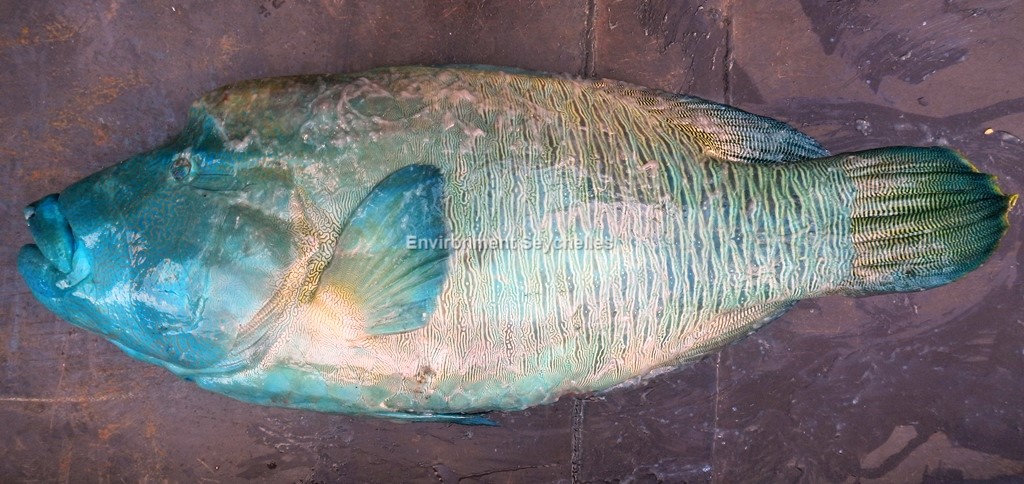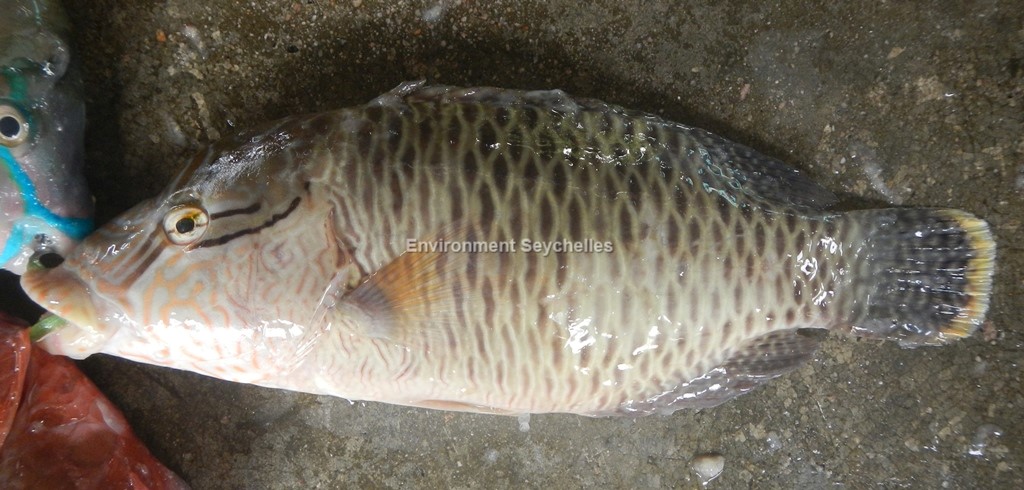Description:
Dorsal spines 9, Dorsal rays 10, Anal spines 3, Anal rays 3.
This species is readily identifiable due to various characteristics. It has remarkable colouration ranging from bright metallic blue-green to dull blue green for males and
red-orange to olive green for females. The scale colouration gives a distinctive tessellated pattern to the flanks. Two black lines run posteriorly from the eyes. There is
an intricate pattern of orange-brown lines and spots on the face. Adults exhibit a large prominent hump on the forehead and large fat lips. Juveniles have a prominent
yellow margin to their caudal fin.
Size:
Max Length: 229cm. Largest member of the family Labridae. Common length: 60cm TL. Males are typically larger than females, with females rarely exceeding 100cm TL.
Maturity: Lm unknown. Range 52 - ? cm
Habitat and Ecology:
Adults inhabit outer reef slopes and lagoon reefs from depths of 2-100m. Juveniles typically occur in shallower and more coastal waters associated with branching hard
and soft corals and seagrass beds. Adults are usually solitary but may occur in pairs. They are territorial with a limited home range. Adults range across the reefs during
the day and rest at night in caves or under coral ledges. A protogynous hermaphrodite, with some females becoming male at approximately 9 years of age. Adults form spawning
aggregations with pairs forming as part of the aggregations. Females live longer than males, the oldest record being 32 years.
It feeds on a variety of molluscs, fishes, sea urchins, crustaceans and other invertebrates. It is known to predate toxic animals such as sea hares, boxfishes and COTS.
Fishery Status:
This species though listed as Endangered (IUCN) is not protected or subject to fishery regulations in Seychelles. It is caught in both the fish trap and hand line fisheries,
but is an uncommon to rare component of the catch.
Notes:
References:
Froese, R. & D. Pauly. (Eds.) (2018). FishBase. https://www.fishbase.de/summary/Cheilinus-undulatus.html (06/08/18).
Fishes of Australia: http://fishesofaustralia.net.au/home/species/2962 (06/08/18).
Russell, B. (2004). Cheilinus undulatus. The IUCN Red List 2004: https://dx.doi.org/10.2305/IUCN.UK.2004.RLTS.T4592A11023949.en. (06/08/18).
Randall, J.E.(1986). Labridae. p. 683-706. In M.M. Smith and P.C. Heemstra (eds.) Smiths' sea fishes. Springer-Verlag, Berlin.
Citation:
Nevill, J.E.G. (2019). Cheilinus undulatus, Napoleon wrasse. Seychelles Seatizens. www.seatizens.sc. https://seatizens.sc/species/cheilinus-undulatus-ruppel-1835/
(edited 19/04/22).




There are no comments